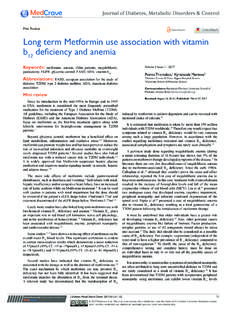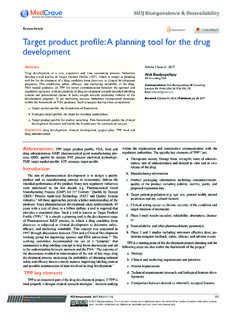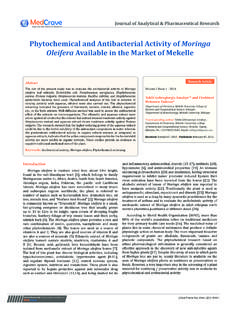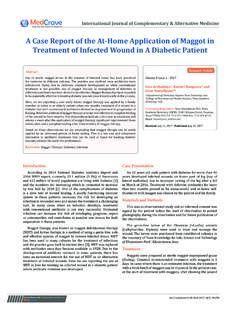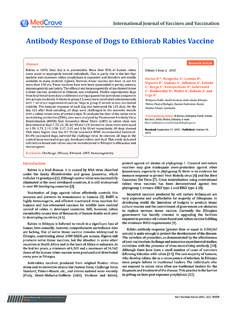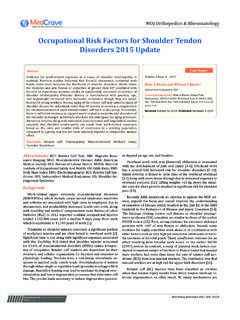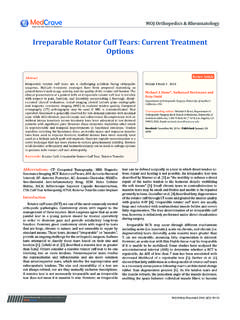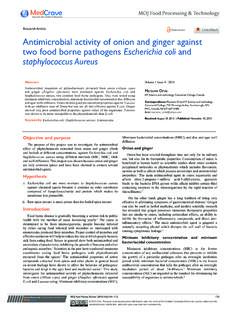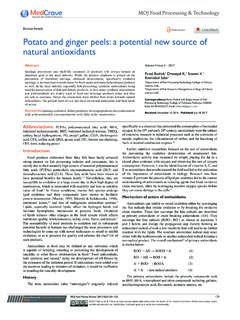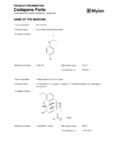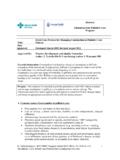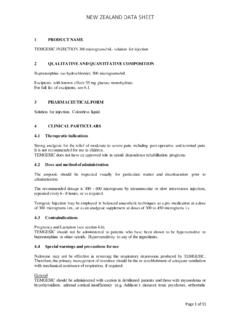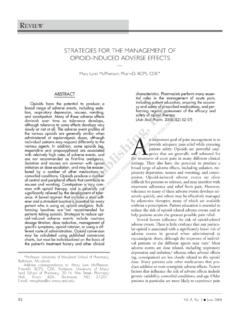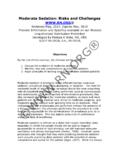Transcription of Concerns of Addiction to Anaesthesiologists in the ...
1 Journal of Anesthesia & Critical Care: Open AccessConcerns of Addiction to Anaesthesiologists in the perioperative Period Volume 2 Issue 2 - 2015 Rakesh Garg1* and Uma R Hariharan21 Department of Anaesthesiology, India2 Department of Anaesthesia and Intensive Care, India*Corresponding author: Rakesh Garg, Department of Anaesthesiology, Pain and Palliative Care, Dr BRAIRCH, All India Institute of Medical Sciences, Room No. 139, Ist floor, Ansari Nagar, New Delhi-110029, India, Tel: +91 9810394950, +91 9868398335; Email: Received: March 20, 2015 | Published: April 09, 2015 Submit Manuscript | Anesth Crit Care Open Access 2015, 2(2): 00052 Drug abuse has a huge impact in the perioperative care of any addicted patient.
2 Not only does it translate into increased costs, but also several medico-legal and socio-cultural problems. Bringing out a positive history of Addiction or drug abuse can be a challenging task and urinary drug testing (UDS) has its own limitations. The complications following intravenous drug abuse are mainly three-fold: effects due to drug-toxicity; effects related to administration route; and effects arising out of social implications of drug-dependence [2]. The anesthesiologists could take the responsibility for initiation of quitting the habit by creating awareness about its ill-effects on various body systems, including infections (cellulitis, endocarditis, abscesses and viremia), aneurysms and non-healing ulcers.
3 They can highlight about the higher propensity for peri-operative complications. Pre-anesthetic visit must be elaborate, both in terms of time and assessment. Most of these patients would need intensive monitoring peri operatively. Many of them would require greater than normal doses of anesthetic and analgesic agents. The key to success lies in creating a fine balance, by avoiding both under-and over dosage. Ensuring adequate post-operative analgesia is of paramount importance, to prevent relapse to Addiction by insufficient analgesia [3]. Anesthesiologists must also be prepared to deal with withdrawal and abstinence syndrome. Greater care needs to taken in cases of combination or multiple drug Addiction .
4 To cement the impact of peri-operative counseling against drug Addiction , long term follow-up advice and social support systems must be provided to these Commonly AbusedAnesthesiologists need to be aware of the common drugs which are being abused and their effects. They include (apart from tobacco and alcohol): heroin, ecstasy/MDMA, phencyclidine, cocaine, pentazocine, temazepam/diazepam, magic mushrooms, cannabis and solvents [4]. There is a recent trend towards abuse of ketamine and propofol among medical professionals. Heroin, marijuana and cocaine are the most common (either alone or in combination). Heroin [5] (diacetylmorphine or diamorphine) can be abused in several ways: sniffing (snorting); smoking (chasing the dragon); subcutaneous injection (skin popping); intravenous injection (mainlining?)
5 ??); oral intake; or in combination with cocaine (speed ball). It is metabolized to morphine, excreted in urine as free and un conjugated morphine. Overdose can lead to coma, rhabdomyolysis, hypotension, aspiration pneumonia, pulmonary edema, hypoxia, acidosis and dehydration. There is a high rate of viral and bacterial infection, leading to glomerulonephritis, local pyogenic abscess, endocarditis, secondary amyloidosis, HAN (Heroin associated nephropathy) and HIVAN (HIV- associated nephropathy from Street Heroin). Cocaine [6] is an alkaloid extracted from erythroxylon coca. It is absorbed through the mucous membrane and smoked or injected. Eighty to 90% is metabolized, rest is excreted unchanged.
6 Euphoria is caused by blocking of dopamine reuptake and hypertensive effects are due to inhibition of reuptake of noradrenaline. It has local anesthetic action. Acute renal failure from rhabdomyolysis and renal infarction is also a possibility. Muscle ischemia, contamination of cocaine with heavy metals, crack lung and syndrome of cocaine-induced premature coronary artery disease are serious side-effects. Ecstasy or MDMA (3,4-methylene dioxy methamphet amine) undergoes liver metabolism and renal excretion [7]. Oral intake in group dancing (rave parties or clubs) leads to hyperthermia, fever, dehydration, convulsions, DIC (disseminated intravascular coagulation), rhabdomyolysis and acute renal failure (ARF).
7 If they drink large quantities of water to prevent dehydration, then they may develop dilutional hyponatremia (due to SIADH). Sympathomimetic effects can cause accelerated hypertension, urinary retention or arrhythmias. Marijuana or cannabis (street names include ganja/reefer/dope/grass/weed/bhang) overdose (common in accidental/intentional ingestion of drug mixed with food or smoking joints) causes tachycardia, dry mouth, dilated pupils, arrhythmias, memory loss, impaired motor skills increasing propensity for fatal accidents, acute toxic psychosis, panic attacks or loss of consciousness [8]. It is the most abused drug among the youth in United States and its high is produced by the active compound called THC (delta-9-tetra hydro cannabinol).
8 Benzodiazepines are commonly abused as they are easily available over-the-Mini ReviewIntroductionSubstance abuse is increasing world-wide and has spread its evil tentacles in every continent. Addiction can be to licit/legal agents (eg. tobacco, alcohol) or to illicit/illegal drugs (heroin, cocaine, marijuana etc). Anesthesiologists, as perioperative physicians, have a vital role to play in the comprehensive care of such patients [1]. It is equally important to realize the tremendous impact of drug Addiction in the perioperative period. Creating awareness about the ill-effects of Addiction in day-to-day life in general and in the peri-operative period in particular, is of paramount importance.
9 Anesthesiologists need to be proactive in eliciting history of current or past drug abuse and in tackling this double-edged sword. Impact of AddictionConcerns of Addiction to Anaesthesiologists in the perioperative Period2/3 Copyright: 2015 Rakesh et : Rakesh G, Uma RH (2015) Concerns of Addiction to Anaesthesiologists in the perioperative Period. J Anesth Crit Care Open Access 2(2): 00052. DOI: drugs or by thefts [9]. Inadvertent intra-arterial injection can cause acute renal failure or limb ischemia. Panaeolus muscaria and Psilocybe are hallucinogens (liberty cap or magic mushrooms) [10]. Inadvertent ingestion of poisonous mushroom species can cause nephrotoxicity and oliguric renal failure.
10 Volatile substances like toluene and benzene can be abused (glue sniffing) as they produce short term hallucinations. Solvent abuse can cause serious complications affecting kidney, lung and the cardiovascular system. Pre-anesthetic Evaluation Drug abuse patients can present to the anesthesiologists for a variety of reasons, either emergency or elective or during labor or for trauma care. Most of the illicit drugs impair the motor skills and reaction time and are responsible for serious accidents, causing death or disability due to trauma. In elective cases, data about drug abuse may be obtained at the time of preadmission testing or in preoperative area (subjective), or during urine and blood testing (objective).
